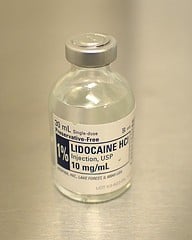Drawing on X-ray crystallography and experimental data, as well as a software suite for predicting and designing protein structures, a UC Davis School of Medicine researcher has developed an algorithm that predicts what has been impossible to generate in the laboratory: the conformational changes in voltage-gated sodium channels when they are at rest or actively transmitting a signal in muscle and nerve cells.
Structural modeling of the voltage-sensing mechanism is important because it allows researchers to generate testable hypotheses and design new, highly specific drugs to treat a wide range of disorders, from chronic pain to epilepsy. The study is published in the Dec. 12 early edition of the Proceedings of the National Academy of Sciences.
Voltage-gated sodium channels are embedded in the plasma membranes of nerve and muscle cells. The channel consists of a large protein that allows sodium ions to pass when a change in voltage occurs across the cell membrane. While high-resolution structures of the voltage sensors that control ion-gate activation have been identified in an activated state, scientists need to know all of the conformational changes that occur throughout the cycle of activation and rest to develop better treatments for disease.
“Sodium channels transmit pain and are the sites of action of local anesthetics,” said Vladimir Yarov-Yarovoy, an assistant professor of physiology and membrane biology at the UC Davis School of Medicine who developed the models in collaboration with researchers from the University of Washington in Seattle. “They are critical targets for new drug development for the treatment of chronic pain, epilepsy and other conditions caused by gain or loss-of-function mutations in voltage-gated sodium channels, which hyperexcite sensory neurons or attenuate action-potential firing causing pain or seizures.”
Serious chronic pain affects at least 116 million Americans each year, and epilepsy affects nearly 3 million Americans and 50 million people worldwide. Yet, the treatment of chronic pain and epilepsy remains a major unmet medical need.
“Currently available drugs for these conditions have limited effectiveness and significant side effects,” said Yarov-Yarovoy. “While the research community has focused on identifying selective inhibitors of sodium-channel subtypes in nerve, heart and muscle cells, no new therapies have advanced to clinical trials. The algorithm is an innovative approach that fosters the design of novel subtype-selective sodium channel blocking drugs that have high efficacy and minimal side effects to treat these disorders.”
Yarov-Yarovy developed his high-resolution structural models using the Rosetta computational methods along with available X-ray crystallography and experimental data. The models sidestep a significant challenge to researchers — the inability to obtain X-ray crystallography structures for the resting and intermediate states of the sodium channel because of their instability and the limitations of current X-ray crystallization techniques.
“To fully grasp the mechanism of voltage activation, we need to know more than one conformation of the voltage-sensing domain,” said Benoít Roux, professor of biochemistry and molecular biophysics at the University of Chicago. “So far, X-ray crystallography has provided only the structure of the channel in the activated-state. The careful computational modeling developed by Yarov-Yarovoy is a powerful technique that is absolutely critical to advance our understanding of these systems.”
The UC Davis School of Medicine is among the nation’s leading medical schools, recognized for its research and primary-care programs. The school offers fully accredited master’s degree programs in public health and in informatics, and its combined M.D.-Ph.D. program is training the next generation of physician-scientists to conduct high-impact research and translate discoveries into better clinical care. Along with being a recognized leader in medical research, the school is committed to serving underserved communities and advancing rural health. For more information, visit UC Davis School of Medicine at medschool.ucdavis.edu.


